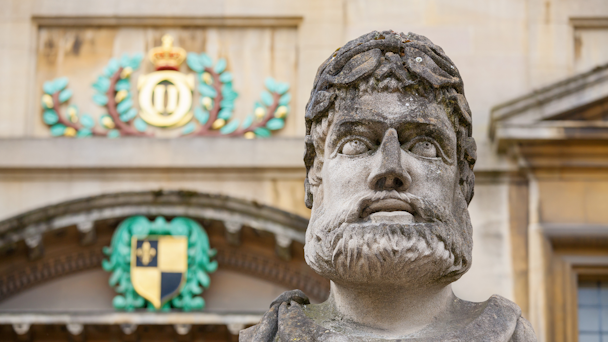How brands can build on their past to shape their future
For heritage brands undergoing a transformation, the key to realizing a new future may be found in leveraging the past, writes Oxford University Press’s head of brand and digital communications Tamira Hamam.

Oxford University Press' Tamira Hamam spells out how legacy brands can tap into their history to build a new future
To the relief, and great fortune, of marketers and brand strategists everywhere, brand building is no longer an art form confined to the big budgets and commercial finesse of fast-moving consumer goods staples like Unilever and Procter & Gamble. More and more, we see longstanding, established brands in transformation looking to the very core of their business – their brand purpose and positioning – to reinvigorate their people, customers and portfolio. In the past year alone, heritage brand giants such as Cadbury, Boots and BMW have all invested in new logo designs, repositioned messaging and a reimagining of their purpose and vision statements.
It’s a smart move. Anyone who has ever written a positioning statement or strapline will know the clarity that comes with unifying around a common thought. However, for many chief execs and their C-suites, the idea of investing in an already recognizable brand – let alone conducting a costly brand refresh exercise – is low on the agenda. Rebrands are risky, and an empty logo change can cost millions — just ask Mastercard about its short-lived 2006 rebrand, which cost $1.5m and was reversed by Pentagram in 2016.
Very often, businesses focus on the mechanics of transformation – structural, cultural and strategic – without thinking about the halo effect of something as visible and scalable as brand to support and lead change. But the benefits for those who marry these modes of thinking are often tangible and immediate – nothing communicates a renewed vision more clearly than a change of brand.
After recently leading a 500-year old publishing house through this kind of step change, here are some learnings for those looking to harness the power of an established brand in order to find a place in the ‘new world’:
1. Set (and communicate) the rules of the game early
When it comes to rebranding, the size of the task at hand tends to be proportionate to the level of ambition set by your business strategy. Are you diversifying your portfolio, trying to reach new customers or enter new markets? Are you hoping to challenge existing preconceptions about your brand?
If so, a fine-tuning of your visual and verbal assets isn’t going to cut it. Seismic change doesn’t come for free, and legacy brands with a lot of baggage to shed will need to be clear early on about the resource requirements for a complete repositioning and rebranding. Just ask Facebook – now known as Meta.
2. Let your customers do the talking
Whether evolution or revolution, a branding exercise should always begin by evaluating audience insights. This is even more crucial for well-established heritage brands, where brand associations will be long-held and deeply rooted. Certain markers of a brand really matter to its audience.
You need to quickly ascertain what is worth retaining about the brand. What brand associations are helpful, and which ones are holding you back from achieving your long-term goals? How do you delight your customers and, more importantly, how do you disappoint them? If brand is what your customers say about you when you’re not in the room, your job is to familiarize everyone in your organization with the gossip.
3. Sharing is caring
A problem shared is a problem halved. Brand is the responsibility of not just its designated manager or team, but of every individual within an organization. Brands are built by their people – by those who design the experience of using them, by those who talk about them, by those who understand and advocate for them.
When it comes to large, long-standing, global organizations, it can be easy for everyone to forget that they are working for a common cause and towards a shared vision. Brand, when done well, can be that north star. If the branding process is inclusive and consultative enough, you’ll build a groundswell of belief from the bottom up. This is extremely powerful – not only in securing senior buy-in and backing, but also in delivering the newly revitalized brand to the world.
4. Nostalgia is a golden thread and a brand’s best friend
Some of the most successful and memorable rebrands of recent years have drawn on a brand’s past to help catalyze its future. We found this at Oxford University Press, where delving into our archived crests, dating back as far as the 18th century, and our original letterpresses and castings helped influence design decisions fundamental to our new identity.
From the ‘future retro’ reimagining of the Burger King logo (a new take on ‘when the brand looked its best’) to NatWest’s trawl of its brand archives for a new visual system built around its original icon from 1968, there is power in connecting your past to your present and future. Not only does this give you – and your customers – a continuum of look, feel and tone; it also reinforces a sense of omnipresence throughout the years. In my experience, I have also found that this helps with internal buy-in – even the most change-resistant skeptics will find their argument weakened by a clear throughline, drawn from where you have come to where you are going.
Brand is nothing if not a simple story, well told. For heritage brands, a rebrand is a wonderful opportunity to begin a new chapter.
Tamira Hamam is head of brand and digital communications at Oxford University Press.
